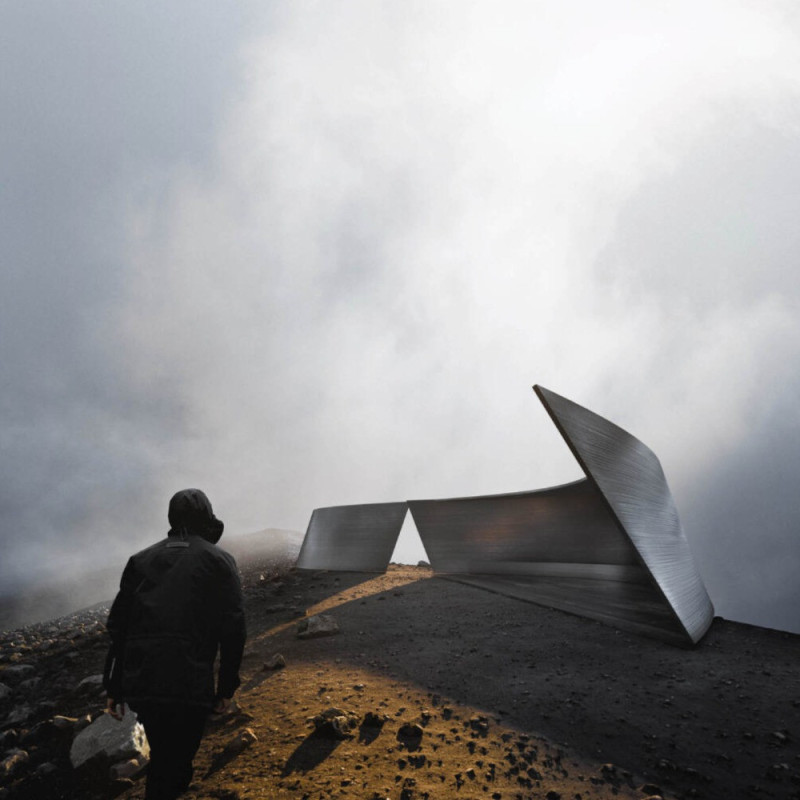5 key facts about this project
The site at Hverfjall Volcano is designed to connect visitors with the natural beauty of Iceland while celebrating its rich cultural heritage. The project features two main elements: an observation deck and an underground cave. Inspired by the falcon, a significant figure in Icelandic folklore, the design aims to create a space that enhances the visitor experience while blending with the rugged landscape.
Observation Deck
The observation deck provides an elevated viewpoint for observing the valley and the volcano's vent. It consists of two curved steel plates that form canopies, creating semi-enclosed areas for visitors. The design focuses on making movement along the paths easy and enjoyable. Niches are positioned to offer views of the surrounding scenery while providing shelter from the elements. Built-in seating enhances the experience by allowing visitors to rest and take in the landscape after their climb.
Cave
The cave, named "the nest," is an underground space accessible from the path to the observation deck. It includes two circular zones, starting with a small entrance that leads to a more enclosed area. The architectural form resembles that of a falcon's nest, with mirrored surfaces that create interesting visual effects inside. This cave serves a dual purpose: it provides refuge for those exploring the area and acts as an attraction in its own right.
Sustainability Measures
Sustainability is a key focus of the design. The plan aims for energy neutrality by using solar panels to meet most lighting needs throughout the year. Analysis indicates that about 100 square meters of solar panels can effectively fulfill these requirements. Furthermore, 3D printing techniques are utilized, allowing for construction with excavated soil and reducing the environmental impact of transportation.
The structure is designed to respond effectively to wind conditions common around Hverfjall. Analysis shows that wind speeds are significantly lowered around the observation deck, which contributes to visitor comfort. The thoughtful arrangement of these elements provides a sense of safety while allowing the building to integrate smoothly into the volcanic landscape.



















































